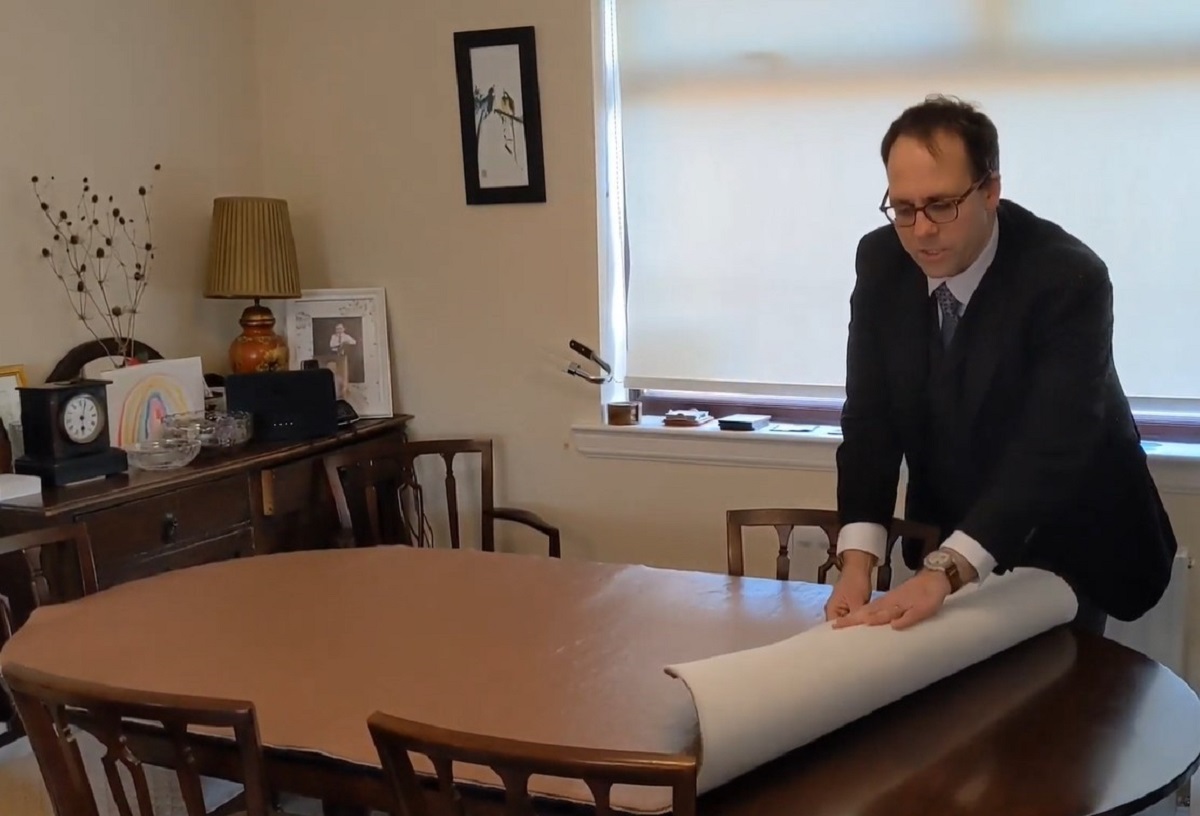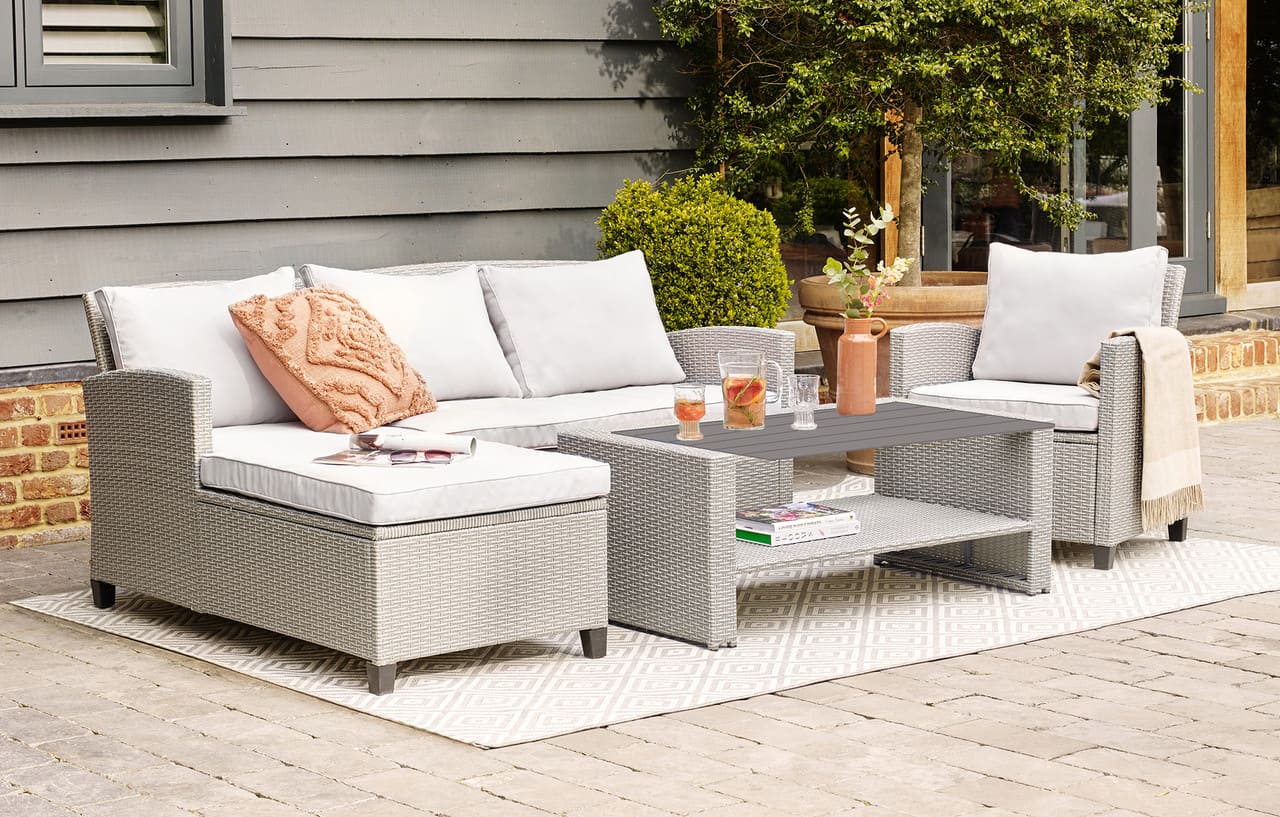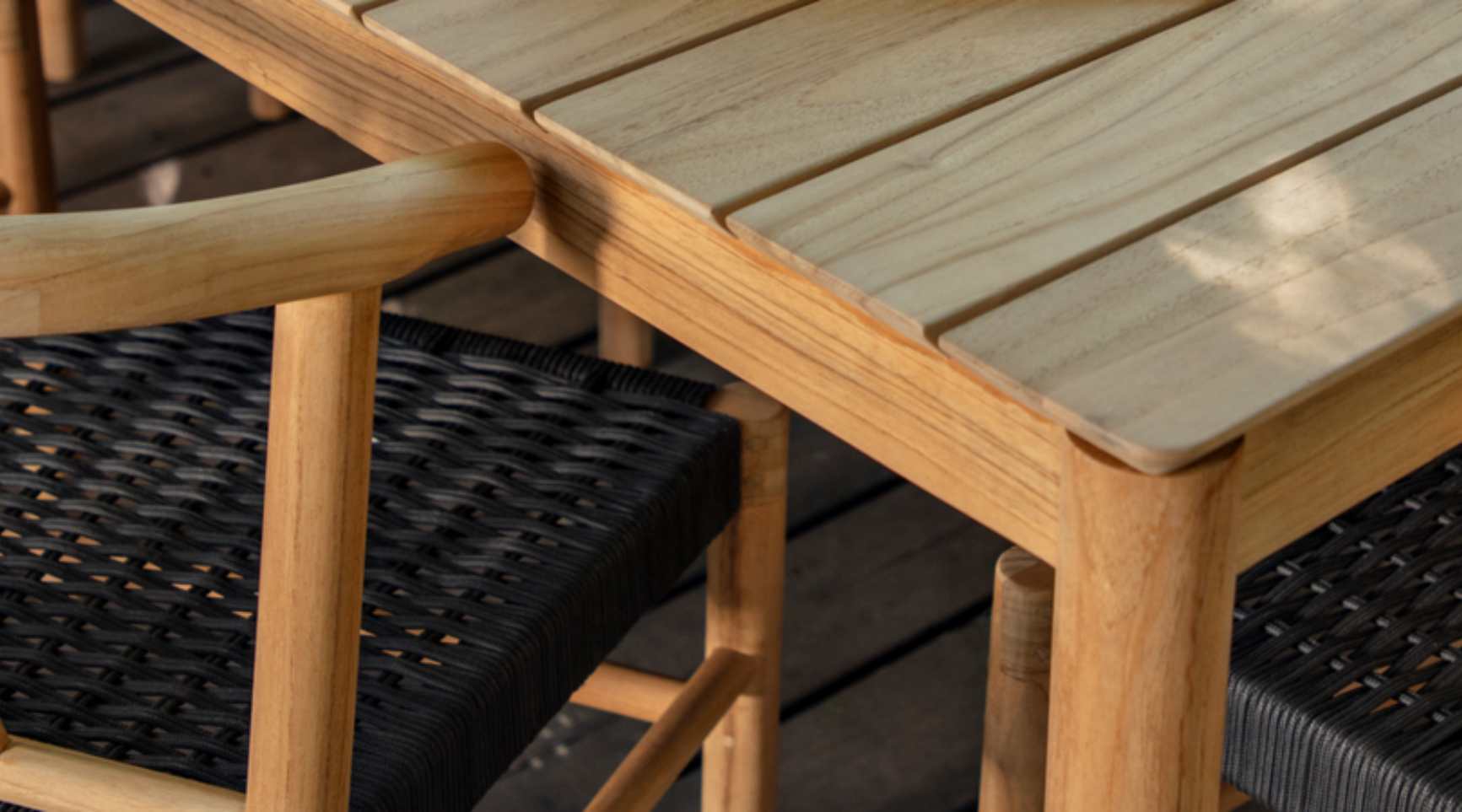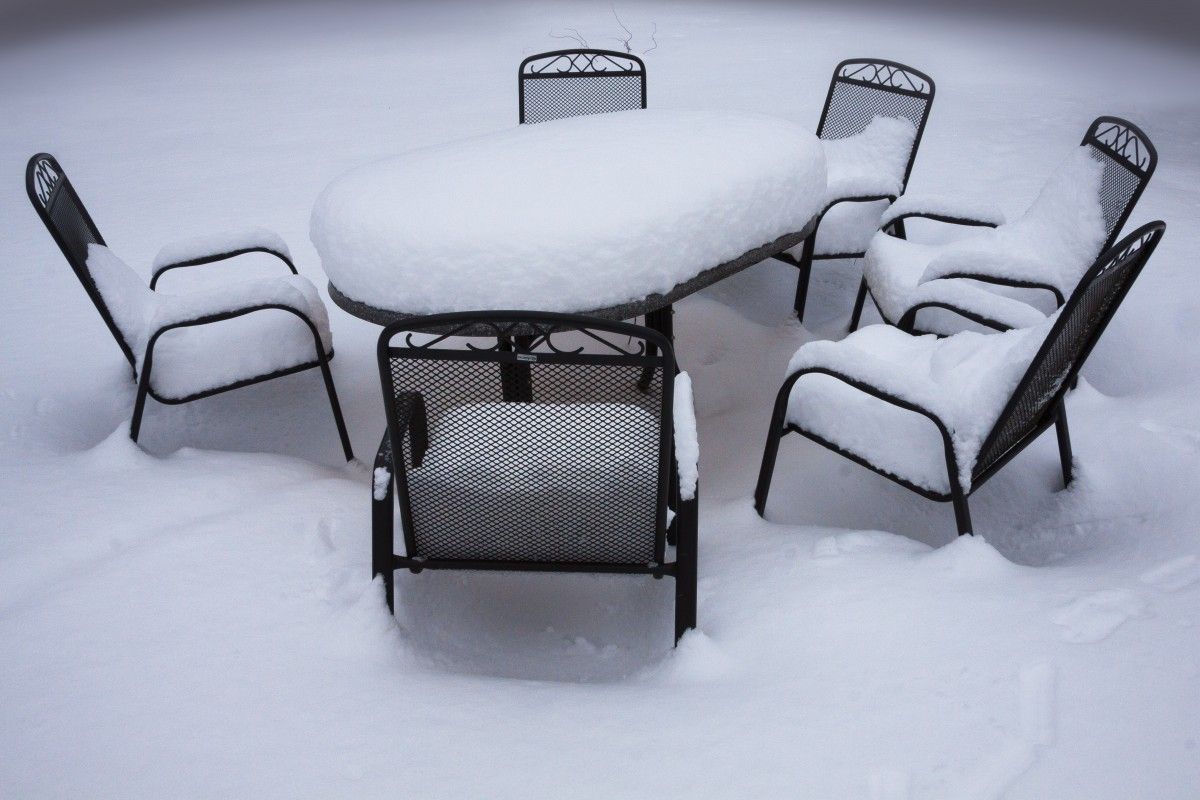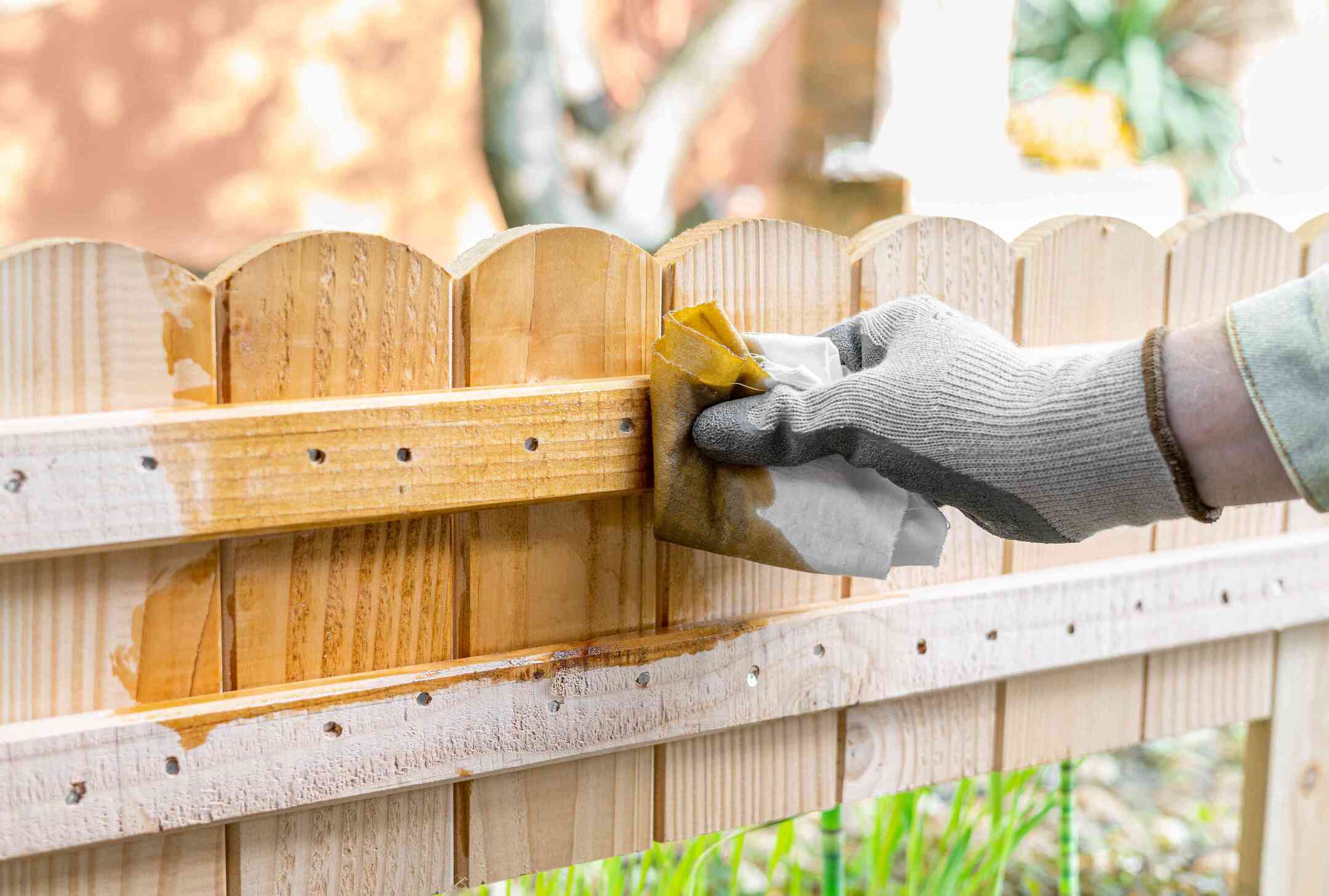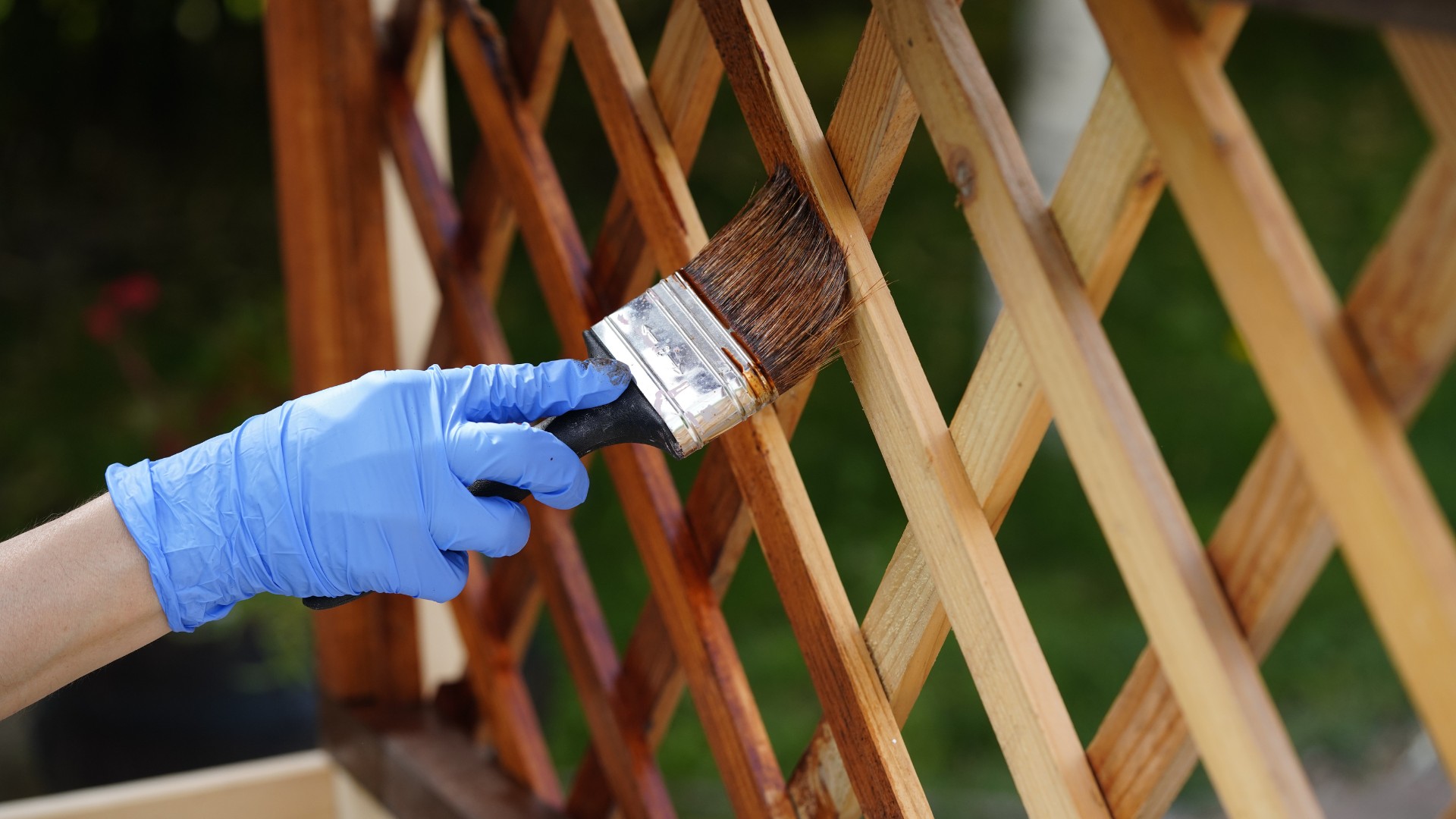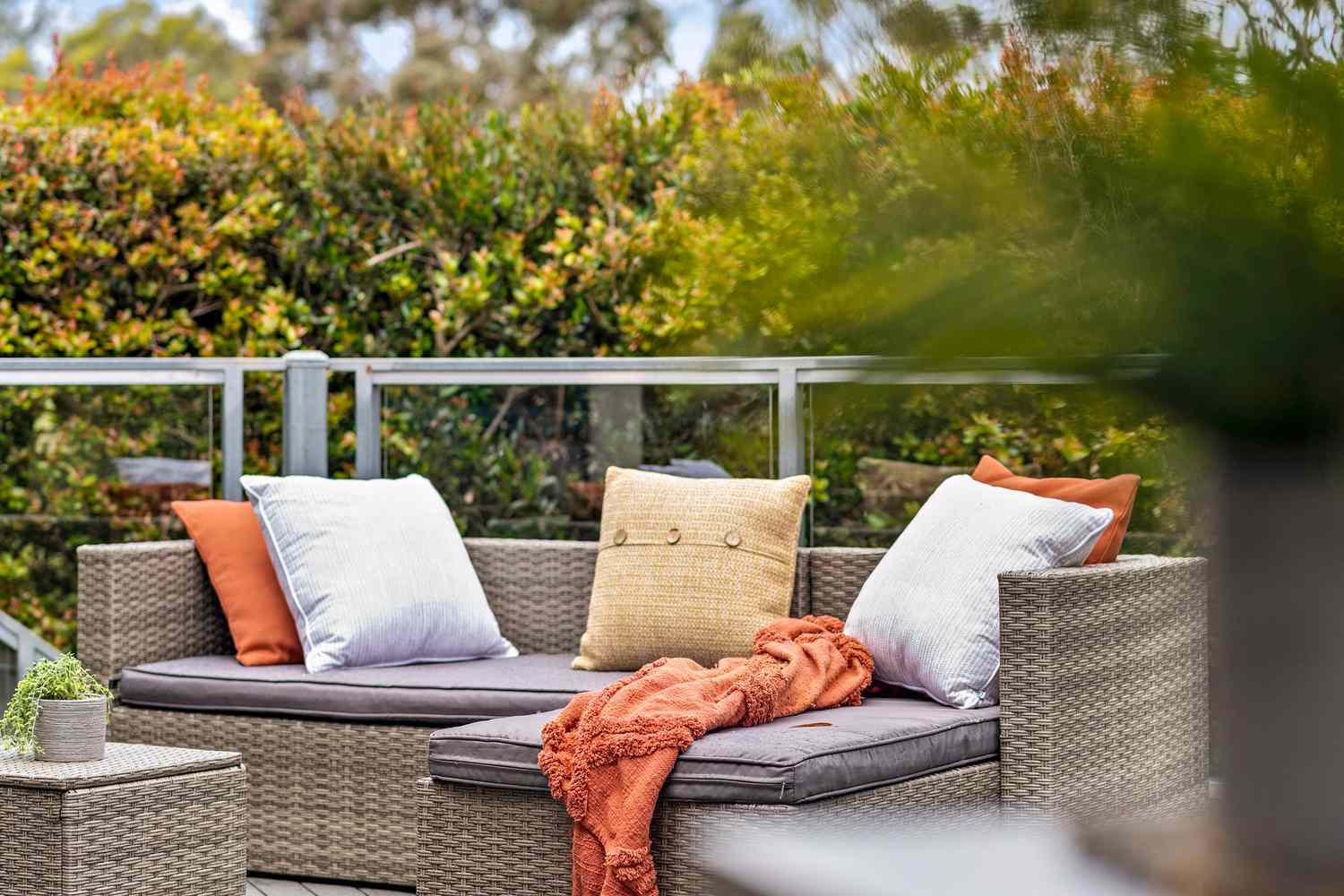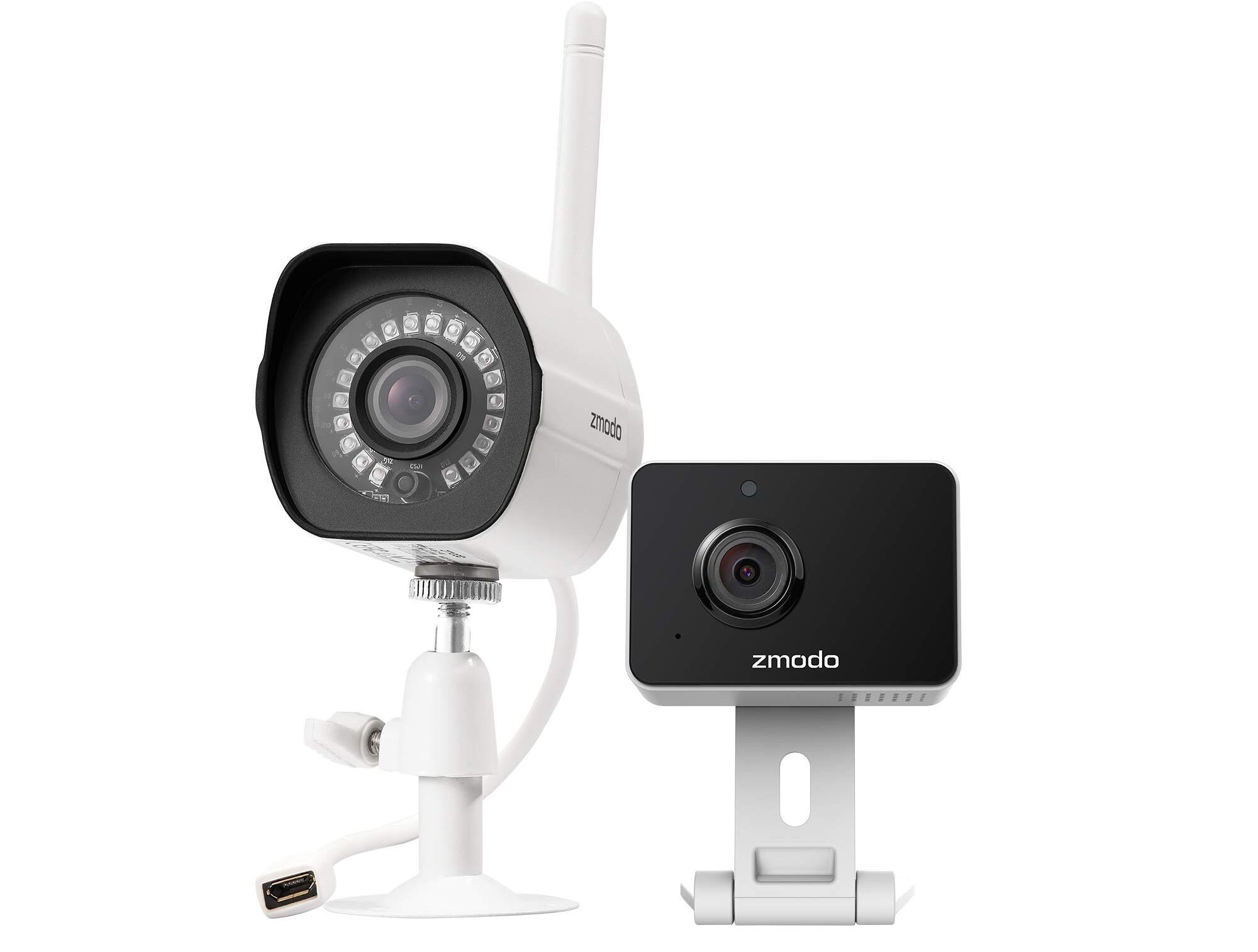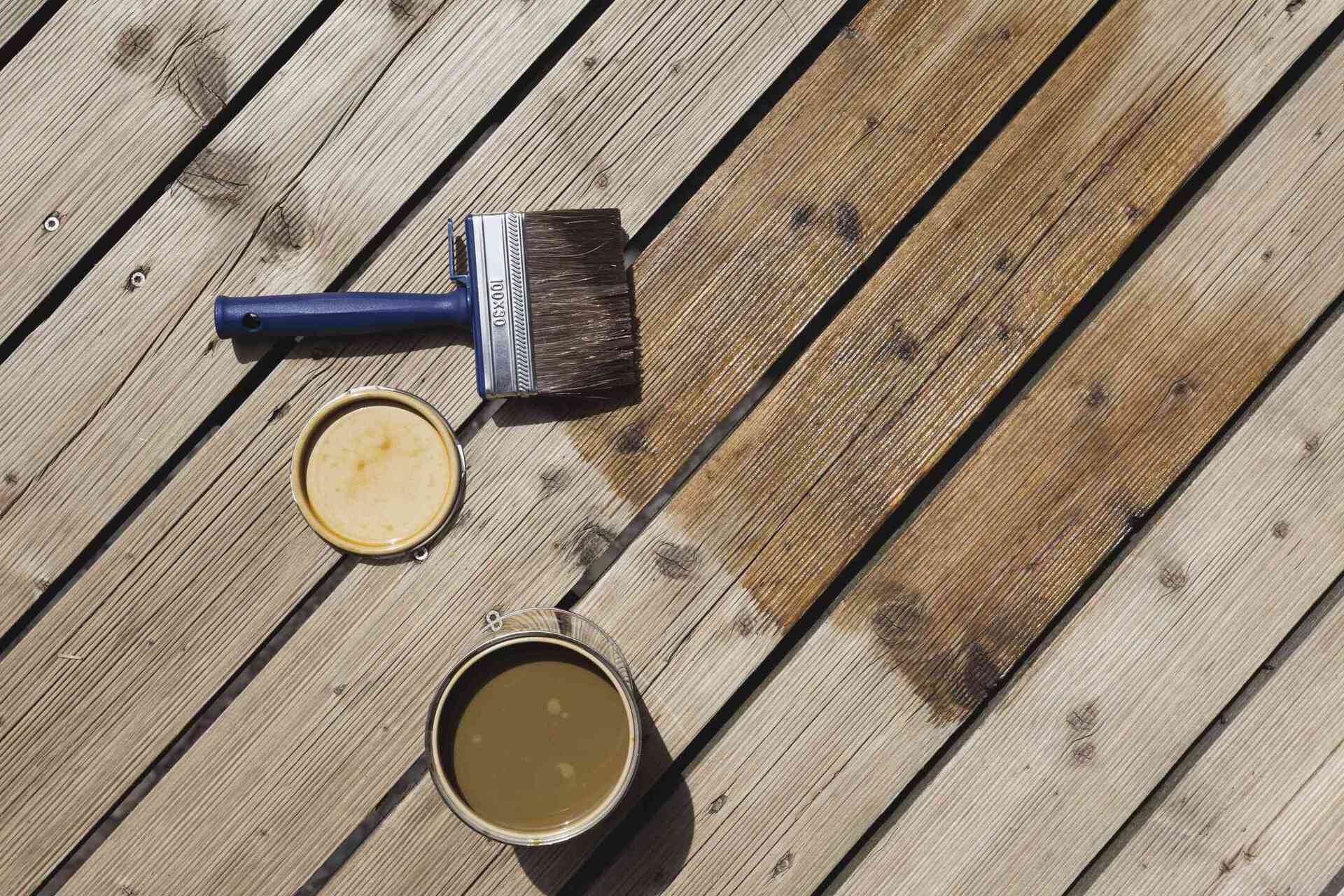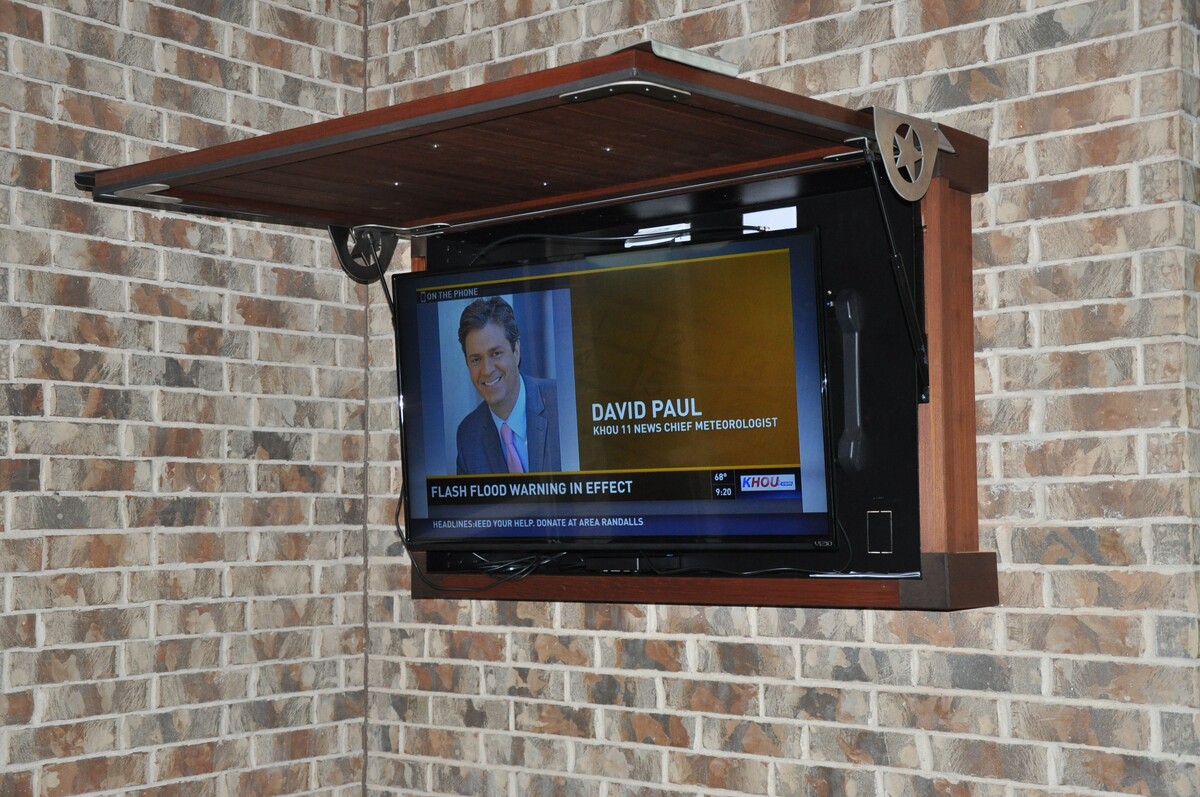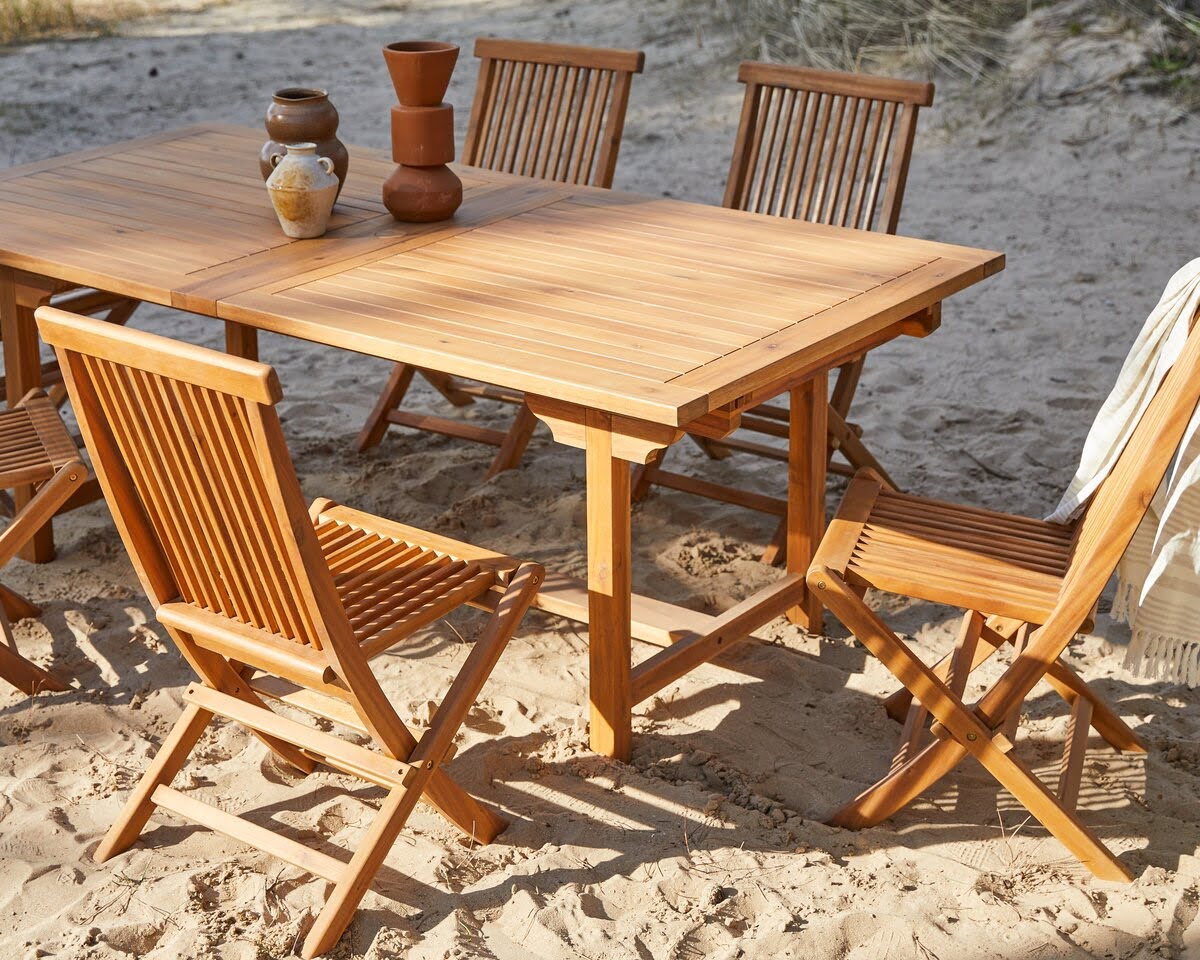Home>Home Security and Surveillance>How To Protect Your Outdoor Camera
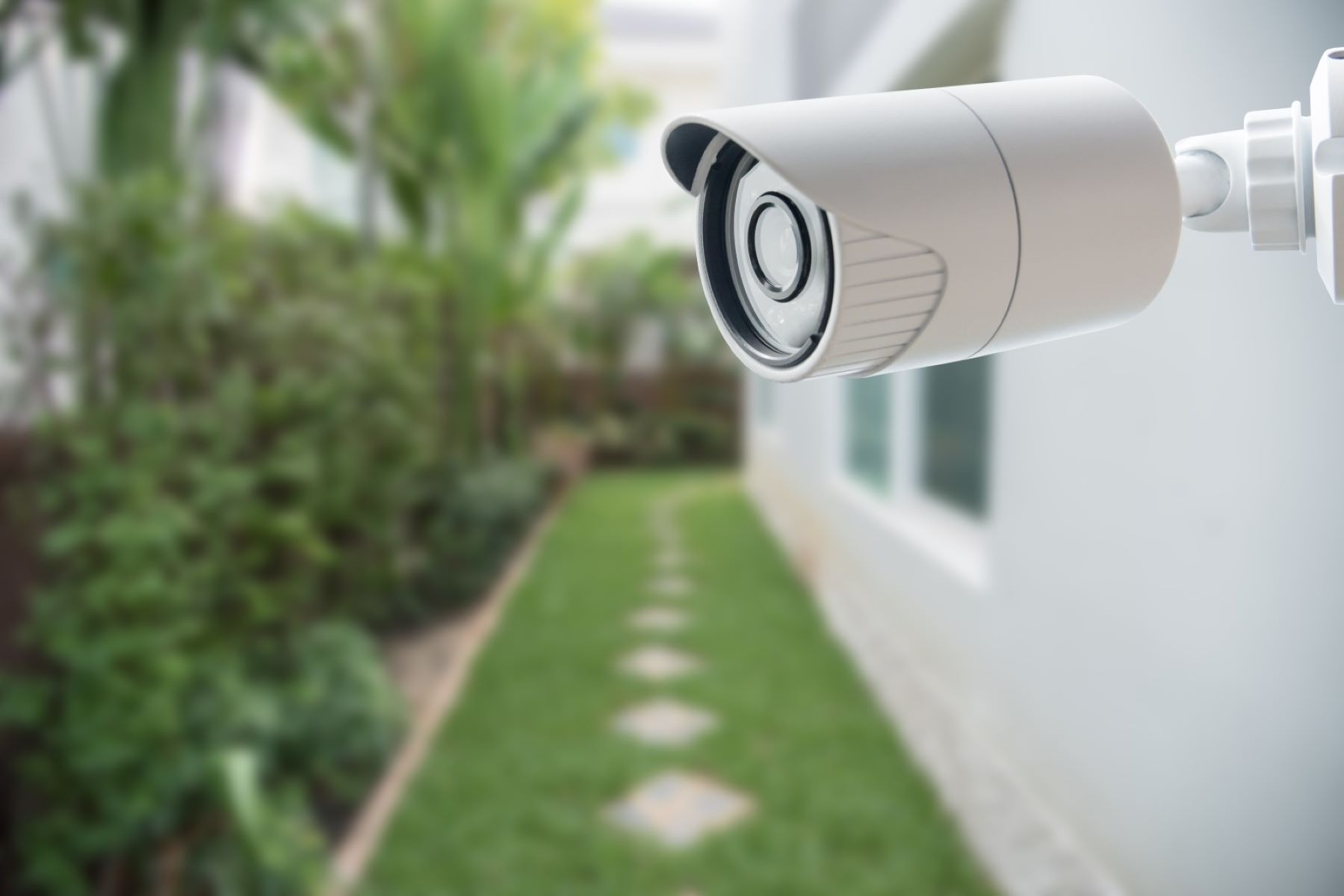

Home Security and Surveillance
How To Protect Your Outdoor Camera
Modified: October 20, 2024
Learn how to enhance your home security and surveillance with our guide on how to protect your outdoor camera. Safeguard your property and loved ones with these valuable tips and tricks.
(Many of the links in this article redirect to a specific reviewed product. Your purchase of these products through affiliate links helps to generate commission for Storables.com, at no extra cost. Learn more)
Introduction
Welcome to the world of home security and surveillance! With the advancements in technology, keeping your home and loved ones safe has become easier than ever before. One of the key components of a robust home security system is an outdoor camera. Whether you want to monitor your property, deter potential intruders, or keep an eye on your pets, an outdoor camera can provide you with the peace of mind you deserve.
However, simply installing an outdoor camera is not enough. To ensure its effectiveness and longevity, you need to take certain steps to protect and maintain it. In this article, we will explore various ways to safeguard your outdoor camera, from choosing a weatherproof camera to securing access to its feed. So, let’s dive in and discover how to protect your outdoor camera!
Key Takeaways:
- Choose a weatherproof outdoor camera with a high IP rating and durable construction to withstand various weather conditions and ensure reliable performance throughout the year.
- Secure access to your outdoor camera’s feed by using strong login credentials, encrypted protocols, and two-factor authentication to protect your privacy and prevent unauthorized access.
Read more: How To Protect Your Outdoor Grow From Bugs
Choose a Weatherproof Camera
When it comes to outdoor security cameras, one of the first considerations should be their ability to withstand different weather conditions. Investing in a weatherproof camera is crucial to ensure its durability and functionality in the long run.
Look for cameras with an IP (Ingress Protection) rating, as this indicates their resistance to dust and water. The IP rating consists of two numbers, with the first number representing the camera’s protection against solid objects, such as dust, and the second number indicating its resistance to water.
For outdoor use, it is recommended to opt for a camera with at least an IP66 rating. This will ensure that the camera is completely dust-tight and protected against powerful jets of water, making it suitable for various weather conditions, including heavy rain, snow, and extreme temperatures.
In addition to the IP rating, consider a camera with a rugged construction made from high-quality materials. Look for features like impact resistance and corrosion resistance to ensure that your camera can withstand outdoor elements and potential physical damage.
Furthermore, consider the camera’s ability to adapt to changing lighting conditions. Look for cameras with wide dynamic range (WDR) technology, which allows them to capture clear and detailed images even in challenging lighting situations, such as bright sunlight or low-light environments.
By selecting a weatherproof camera that meets these criteria, you can be confident that your outdoor surveillance system is equipped to handle the elements and deliver reliable performance throughout the year.
Install in a Safe and Secure Location
Where you install your outdoor camera plays a vital role in its effectiveness and longevity. Choosing a safe and secure location is essential to ensure the camera captures the necessary footage and remains protected from tampering or damage.
Firstly, position the camera at a height that provides a clear view of the area you want to monitor. Mounting the camera too low can make it vulnerable to tampering or obstruction, while mounting it too high may result in a less detailed image. Aim for a height that strikes a balance between capturing a wide field of view and maintaining a clear and sharp image.
Consider the vulnerability of the camera to potential tampering. Avoid placing it within easy reach, as this can make it a target for theft or vandalization. Instead, position it higher or out of reach, such as on the second floor, under the eaves, or behind a protective cover. This will deter criminals and increase the camera’s overall safety.
In addition, make sure the camera is securely attached to its mount. Use tamper-proof screws or brackets to prevent unauthorized removal. There are also specialized camera mounts available that offer additional security features, such as lockable enclosures or anti-climb brackets.
When selecting a location, consider the camera’s field of view and the areas you want to monitor. Place the camera in a central position that covers the main entrances and vulnerable spots, such as windows, doors, and driveways. This will provide you with comprehensive coverage and enable you to capture any suspicious activity.
Lastly, be mindful of the camera’s exposure to direct sunlight. Prolonged exposure can cause overheating and potentially damage the camera’s internal components. If possible, choose a location that provides some shade or install a protective cover to shield the camera from direct sunlight.
By following these guidelines and installing your outdoor camera in a safe and secure location, you can maximize its effectiveness and protect it from potential threats, ensuring that your home and loved ones are well-secured.
Use Tamper-Proof Mounting
When it comes to outdoor security cameras, ensuring their stability and resistance to tampering is of utmost importance. Using tamper-proof mounting solutions can greatly enhance the security and reliability of your outdoor camera system.
Tamper-proof mounting brackets or enclosures are designed to deter unauthorized access or removal of the camera. These specialized mounting options often feature anti-tamper screws or lockable covers that prevent easy removal or disassembly.
One popular tamper-proof mounting solution is the Vandal-Proof Dome Camera. These cameras are enclosed in a protective dome-shaped housing that makes it difficult for intruders to tamper with or disable the camera. The robust construction and impact-resistant design of these cameras can withstand attempts of vandalism or tampering.
Another option is using a lockable enclosure. These enclosures provide an added layer of protection to your outdoor camera by physically locking the camera inside a secure box. This prevents not only unauthorized removal but also access to the camera’s cables and connectors, making it even more challenging for potential intruders to interfere with the camera’s functionality.
It’s also important to ensure that the mounting hardware is securely fastened to the mounting surface. Use anchor bolts or screws that are resistant to tampering or removal. Consider using security screws or one-way screws that require special tools for installation and prevention against easy tampering.
In addition to tamper-proof mounting solutions, it’s essential to regularly inspect the camera and its mount to ensure there are no signs of tampering or attempts to disable the device. Conduct routine checks for any loose screws or any suspicious activity around the camera. Promptly address any issues to maintain the integrity and effectiveness of your outdoor camera system.
By using tamper-proof mounting solutions, you can protect your outdoor camera from unauthorized access or interference, ensuring that it continues to provide reliable and secure surveillance for your home or property.
Protect from Rain and Moisture
Outdoor security cameras are exposed to various weather conditions, including rain and moisture. Protecting your camera from these elements is crucial to ensure its longevity and optimal performance.
When installing your outdoor camera, consider the direction of rainfall and position the camera accordingly. Mount it at an angle that prevents rainwater from directly hitting the lens or housing. This will minimize the chances of water droplets obstructing the camera’s view and affecting the image quality.
Investing in a camera with an IP66 or higher rating will provide a high level of protection against water ingress. However, it’s still advisable to take extra precautions to safeguard your camera from excessive moisture. One way to do this is by using a camera housing or protective enclosure specifically designed to shield the camera from rain and other environmental factors.
Ensure that the camera housing or enclosure is properly sealed to prevent water from seeping inside. Look for a housing with an integrated gasket or weatherproof seal that creates a tight barrier between the camera and the outdoor elements. Regularly inspect the housing for any signs of wear or damage, and promptly replace it if necessary.
In areas with high humidity or frequent rainfall, condensation can be a concern. Condensation occurs when warm air comes into contact with a cooler surface, causing moisture buildup. To prevent this, consider using a camera housing with built-in ventilation or desiccant packs that absorb moisture within the enclosure.
Proper cable management is also essential for protecting the camera from rain and moisture. Ensure that all cables are securely connected and sealed with weatherproof connectors. Use waterproof cable conduits or enclosures to protect the cables from exposure to moisture. Regularly inspect the cables for any signs of damage or wear, and replace them if necessary.
Regular maintenance is key to keeping your outdoor camera protected from rain and moisture. Clean the camera and housing regularly using a soft, lint-free cloth to remove any dirt or debris that may accumulate. Make sure to dry the camera thoroughly before reassembling it to prevent moisture buildup.
By implementing these measures, you can effectively protect your outdoor camera from rain and moisture, ensuring its optimal performance and longevity.
Read more: How To Protect Your Carpet
Ensure Proper Cable Management
Proper cable management is often overlooked when it comes to outdoor security camera installations. However, it is a crucial aspect to consider to ensure the functionality and longevity of your camera system.
One of the primary considerations is to use cables that are specifically designed for outdoor use. Outdoor-rated cables are typically constructed with materials that can withstand exposure to different weather conditions, including sun, rain, and extreme temperatures. These cables are also UV resistant, which helps to prevent degradation and damage from prolonged sun exposure.
It is important to protect the cables from physical damage or wear. When running cables, avoid placing them in areas where they may be easily tripped over, stepped on, or damaged by landscaping equipment. Use conduit or protective cable covers to shield the cables from potential hazards and tampering.
Furthermore, ensure that the connectors on the cables are properly sealed to prevent water and moisture ingress. Waterproof cable connectors or gel-filled connectors are recommended for outdoor installations as they provide an extra layer of protection against moisture. Regularly inspect the connectors for any signs of wear or damage and replace them if necessary.
It is also important to consider the length of the cables and the distance between the camera and the recording or monitoring device. Opt for a cable length that allows for proper cable management without excessive slack or tension. Excessive tension on the cables can result in damage to the connectors or strain on the camera and its mounting.
To organize and manage the cables effectively, use cable clips or ties to secure them along the mounting surface or inside conduit. This helps to keep the cables neat, prevent tangling, and minimize the risk of accidental damage. Additionally, labeling the cables can make future troubleshooting or maintenance easier.
Regularly inspect the cables for any signs of wear, damage, or degradation. Exposure to the elements can deteriorate the quality of the cables over time, potentially affecting their performance. Replace any damaged or worn-out cables promptly to ensure the integrity of your camera system.
By ensuring proper cable management, you can protect the integrity of your outdoor security camera system, promote reliable performance, and reduce the risk of damage or failure due to cable-related issues.
Consider installing your outdoor camera in a weatherproof housing to protect it from the elements. This will help prevent damage and ensure it continues to function properly.
Install Proper Lighting
Installing proper lighting around your outdoor security camera is crucial for enhancing its effectiveness and ensuring clear, detailed footage, especially during low-light conditions. Well-placed and well-designed lighting can significantly improve the overall performance and coverage of your camera system.
One of the primary considerations is to have adequate ambient lighting in the surveillance area. This can be achieved by installing outdoor lights that provide a consistent and uniform level of illumination. LED floodlights or wall-mounted lights are popular options for providing general lighting around the camera’s field of view.
Strategically positioning the lights to eliminate dark areas and shadows will help ensure better visibility and coverage. Aim to have a balanced and uniform distribution of light to minimize harsh shadows or overexposed areas. Experiment with different angles and positions to find the optimal arrangement that maximizes the camera’s view.
In addition to general lighting, consider installing motion sensor lights. These lights are triggered by movement and can act as a deterrent for potential intruders. When the sensor detects motion, the lights will automatically turn on, illuminating the area and capturing clearer images. This not only enhances the camera’s visibility but also alerts you to any unusual activity.
Another important aspect is infrared (IR) lighting. Many outdoor security cameras come equipped with IR LEDs that emit invisible infrared light. This technology allows the camera to capture detailed black-and-white images in complete darkness. Ensure that the camera’s IR illumination aligns with its field of view to avoid hotspots or uneven lighting conditions.
When positioning the camera and lighting, consider potential glare or reflections. Direct light shining into the camera’s lens can cause glare or wash out the image. Adjust the position and angle of the lights to minimize such effects, ensuring that the camera captures clear and unobstructed footage.
Regularly inspect and maintain the lighting around your outdoor camera. Clean the light fixtures and check for any bulbs that need replacement. Ensure that the wiring is secure and protected from the elements.
By installing proper lighting, you can enhance the performance and coverage of your outdoor security camera, ensuring that you have clear and detailed footage in all lighting conditions.
Regularly Check and Clean the Camera
Regular maintenance and cleaning are vital for ensuring the optimal performance and longevity of your outdoor security camera. Over time, dirt, dust, and debris can accumulate on the camera, affecting its image quality and functionality. By incorporating regular check-ups and cleaning into your camera maintenance routine, you can maximize its effectiveness and prolong its lifespan.
Regularly inspect the camera for any signs of physical damage or wear. Check the housing, lens, and cables for cracks, loose connections, or other visible issues. Address any problems promptly to prevent further damage or potential malfunctions.
Cleaning the camera lens is essential for maintaining clear and sharp image quality. Use a soft, lint-free cloth or a camera-specific lens cleaning solution to gently remove any smudges, fingerprints, or dirt from the lens surface. Avoid using harsh or abrasive materials that could scratch the lens. Regular lens cleaning will help ensure that your camera captures crisp and accurate footage.
Additionally, clean the camera housing and any exposed parts regularly to remove dust, grime, or other debris. Use a soft cloth or a gentle cleaning solution suitable for the camera’s material, such as plastic or metal. Be cautious not to get any liquids into the camera’s openings or ports to prevent damage to internal components.
Pay attention to the camera’s ventilation system, especially if it has cooling fans or vents. Dust and debris can accumulate in these areas and impede proper airflow, leading to overheating. Use a can of compressed air or a soft brush to remove any buildup and ensure unobstructed airflow.
While performing regular check-ups and cleaning, also inspect the camera mount and any other mounting accessories. Ensure that they are secure and in good condition. Tighten any loose screws or bolts and lubricate any mechanisms if necessary.
It is recommended to establish a regular schedule for camera maintenance, depending on the environment and weather conditions. In areas with higher levels of dust, debris, or extreme weather, more frequent cleaning and inspections may be necessary.
By regularly checking and cleaning your outdoor security camera, you can maintain its optimal performance, prevent potential issues, and ensure that it continues to deliver reliable surveillance for your home or property.
Secure Access to Camera’s Feed
Securing access to your outdoor camera’s feed is crucial to protect your privacy and ensure that only authorized individuals can view the footage. With the increasing number of connected devices and potential security vulnerabilities, it is important to take steps to safeguard your camera’s feed from unauthorized access.
One of the first measures to implement is to change the default username and password provided by the camera manufacturer. Default credentials are often widely known and can be easily exploited by hackers. Choose strong and unique login credentials that combine a mix of uppercase and lowercase letters, numbers, and special characters.
Ensure that your camera system uses secure and encrypted protocols for data transmission. Choose cameras that support protocols like HTTPS or SSL/TLS to encrypt the data transfers between the camera and the viewing device. This prevents eavesdropping or interception of the camera’s feed by unauthorized individuals.
Consider using a Virtual Private Network (VPN) to access your camera’s feed remotely. A VPN creates a secure and encrypted connection between the viewing device and the camera’s network, ensuring that your communications are protected from potential threats.
Regularly update the firmware of your camera to ensure that you have the latest security patches. Manufacturers often release firmware updates to address any known vulnerabilities and strengthen the camera’s security. Set up automatic firmware updates whenever possible to ensure that your camera remains protected against emerging threats.
Enable two-factor authentication (2FA) for accessing your camera’s feed. This adds an extra layer of security by requiring an additional verification step, such as a unique code sent to your smartphone, in addition to entering your login credentials. Even if someone were to obtain your username and password, they would still need to provide the secondary authentication method to gain access.
Regularly monitor and review access logs to identify any suspicious activity. Most camera systems provide logs that record login attempts and access to the camera’s feed. By keeping an eye on these logs, you can quickly identify any unauthorized attempts and take the necessary actions to secure your camera system.
Consider creating separate user accounts for different individuals who require access to the camera’s feed. This allows you to grant specific permissions and restrict access to certain functionalities or areas within the camera’s view. By controlling and managing user access, you can ensure that only authorized individuals can view the camera’s feed.
By implementing these security measures, you can secure access to your outdoor camera’s feed, protect your privacy, and minimize the risk of unauthorized access or misuse of your surveillance system.
Read more: How Do You Record On Your Outdoor Camera
Consider a Security System
When it comes to protecting your home and loved ones, a comprehensive security system can offer an extra layer of defense. In addition to an outdoor camera, consider investing in a complete security system tailored to your needs and preferences.
A security system typically includes various components, such as door and window sensors, motion detectors, and an alarm system. These components work together to detect any potential security threats and alert you to potential breaches or unauthorized access.
By integrating your outdoor camera into a broader security system, you can benefit from enhanced monitoring capabilities and more effective response protocols. When an alarm is triggered, the camera can instantly start recording and notify you, allowing you to assess the situation and take appropriate action.
Some security systems also offer 24/7 professional monitoring services. In the event of an alarm, the monitoring center will be alerted and can contact the authorities on your behalf. This provides an additional layer of peace of mind, knowing that your home is being monitored around the clock.
Consider a system with smart home integration capabilities. This allows you to control and manage your security system, including your outdoor camera, through a mobile app or voice commands. You can remotely access the camera’s feed, receive real-time alerts, and even integrate it with other smart devices in your home for a more seamless and interconnected security solution.
When selecting a security system, look for a reputable provider that offers reliable hardware, user-friendly interfaces, and excellent customer support. Take into account your specific security needs and the layout of your home to determine the number and placement of the components.
Regularly test and maintain your security system to ensure its optimal performance. Test the sensors, alarms, and camera functionality periodically to verify that everything is in working order. Replace batteries as needed and update the system’s software to stay current with the latest security features.
A comprehensive security system, in combination with your outdoor camera, provides a comprehensive approach to safeguarding your home. It not only deters potential intruders but also provides you with peace of mind, knowing that you have taken proactive measures to protect your loved ones and your property.
Conclusion
Securing your home and ensuring the safety of your loved ones is of utmost importance. An outdoor security camera is a valuable tool in your home security arsenal, but to maximize its effectiveness and longevity, proper protection and maintenance are essential.
Choosing a weatherproof camera that can withstand various weather conditions is a crucial first step. Install the camera in a safe and secure location, out of easy reach and well-positioned to capture the desired areas. Utilize tamper-proof mounting solutions to deter unauthorized access or removal.
To protect your camera from rain and moisture, position it to avoid direct exposure to rainwater, and consider using a protective housing or enclosure. Ensure proper cable management to protect cables from damage and weather elements. Install proper lighting to enhance visibility and provide clear footage, taking into account general lighting, motion sensor lights, and infrared lighting.
Regularly check and clean your camera to maintain optimal performance. Inspect for physical damage or wear, clean the lens and housing, and ensure proper ventilation. Don’t forget to secure access to your camera’s feed by changing default credentials, using encrypted protocols, and enabling two-factor authentication.
Consider complementing your outdoor camera with a comprehensive security system. This can include door and window sensors, motion detectors, and an alarm system to provide a comprehensive and interconnected security solution. Regularly test and maintain your security system to ensure its effectiveness.
In conclusion, taking the necessary steps to protect and maintain your outdoor camera is vital for the overall security of your home. By implementing these measures, you can have peace of mind knowing that your camera system is functioning optimally, capturing clear footage, and deterring potential intruders. Safeguard your home and loved ones with a well-protected and well-maintained outdoor camera system.
Frequently Asked Questions about How To Protect Your Outdoor Camera
Was this page helpful?
At Storables.com, we guarantee accurate and reliable information. Our content, validated by Expert Board Contributors, is crafted following stringent Editorial Policies. We're committed to providing you with well-researched, expert-backed insights for all your informational needs.
